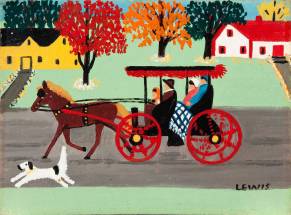Simple pleasures Maud Lewis’s folk art conveys sense of joy that keeps collectors holding on to her rustic work
Read this article for free:
or
Already have an account? Log in here »
To continue reading, please subscribe:
Monthly Digital Subscription
$19 $0 for the first 4 weeks*
- Enjoy unlimited reading on winnipegfreepress.com
- Read the E-Edition, our digital replica newspaper
- Access News Break, our award-winning app
- Play interactive puzzles
*No charge for four weeks then billed as $19 plus GST every four weeks. Offer only available to new and qualified returning subscribers. Cancel any time.
Read unlimited articles for free today:
or
Already have an account? Log in here »
Hey there, time traveller!
This article was published 01/06/2022 (938 days ago), so information in it may no longer be current.
Decades before anyone heard of non-fungible tokens, or NFTs, there was Maud Lewis.
The Nova Scotian’s folksy paintings from the mid-20th century and today’s trendy digital assets have one big thing in common: it’s difficult to explain why either has become worth thousands of dollars.
Art preview
Maud Lewis Retrospective
● Mayberry Fine Art, Unit 138-2025 Corydon Ave. (Tuxedo Park Shopping Centre)
● Hours: Tuesday-Saturday, 9:30 a.m.-5 p.m.
● To June 18
“Her paintings were usually $4, $6 in the mid-’60s and by the time she died in 1970, she raised her price to $10,” says Winnipeg’s Bill Mayberry, who has bought and sold dozens of Lewis’s paintings during his 50 years as an art dealer. “This little partially disabled lady, whom most of us would see in poverty, poor health and pain, left us this amazing legacy of art that Canadians, regardless of where they’re from, find joy in being a custodian of them for a period of time.”
A retrospective of Lewis’s work, on display at Mayberry Fine Art’s gallery at the Tuxedo Park Shopping Centre, offers a few hints at the appeal of Lewis’s paintings.
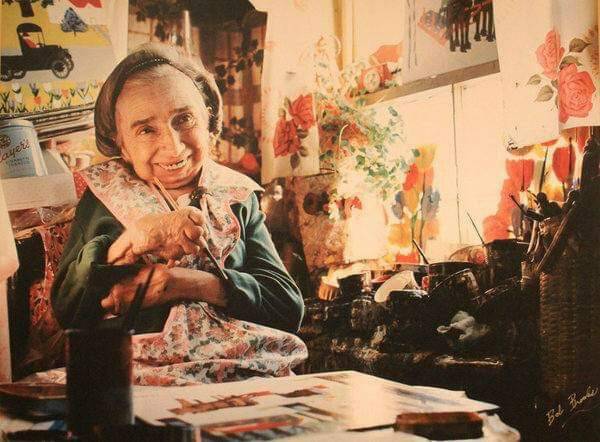
However, it’s her humble life and her unlikely mystique after she died from pneumonia in 1970 that have created a fascination among her fans and collectors.
Lewis lived in Nova Scotia for all of her 67 years, almost all of them in poverty. For many of those years, her paintings were her only income.
She was born with birth defects and would later develop rheumatoid arthritis. Her simple-looking style is a product of her adapting to the stiffness in her joints; in her later years, she would have to use the arm she didn’t paint with to steady the other one.
“As her arthritis really took hold, her ability to move her painting arm was very restricted,” says Shaun Mayberry, who is gallery director at Mayberry Fine Art, the family’s business.
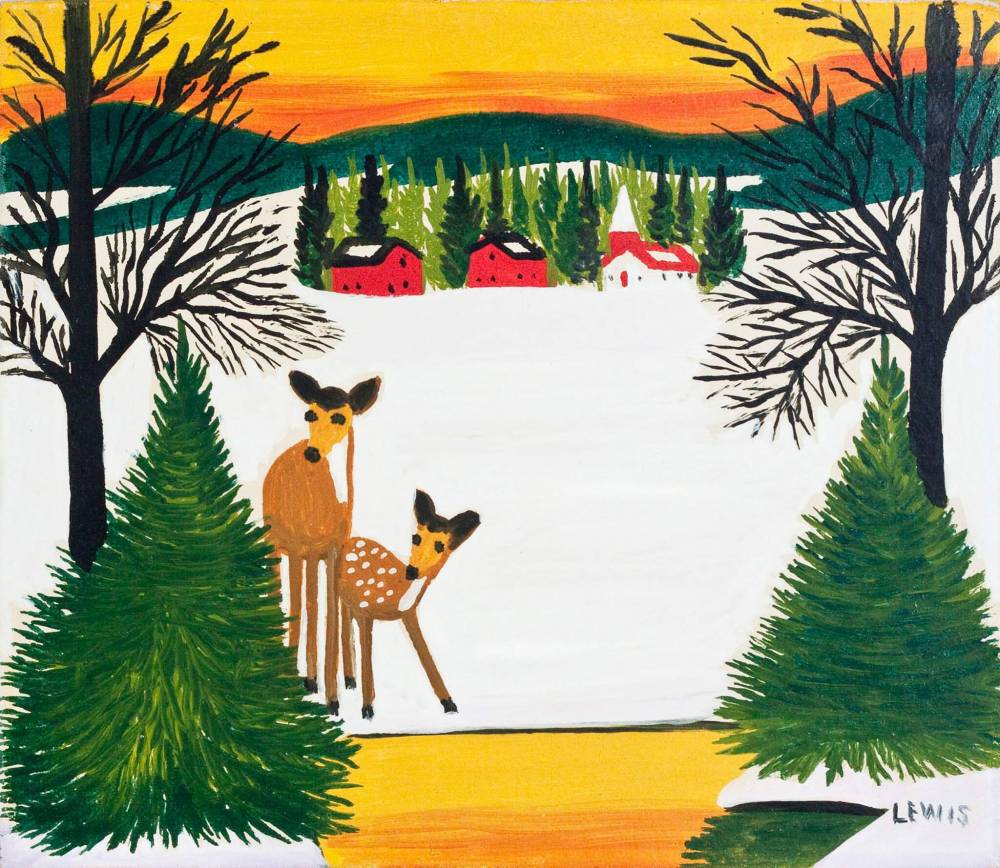
She began painting in the mid-1940s, and her husband, Everett, would sell her work as souvenirs to tourists — often as quickly as she could paint them — for three or four dollars. Those meagre earnings would help them eke out their existence at their small cottage near Digby, N.S.
She painted with and on whatever her husband could find as scrap, mostly leftover boat paint on sheets of particle board Everett could scrounge in the area.
The works were sold unframed; many of the paintings in the exhibition have frames the Mayberry family made specifically for Lewis’s works.
The Lewises’ cottage became a favourite stop for travellers after she was profiled in a 1965 CBC documentary, and her paintings would soon be spread across the world, but mostly in North America.
Two even made their way to the White House after then-president Richard Nixon mailed a few bucks her way — the Lewises demanded cash up front even from the leader of the free world.
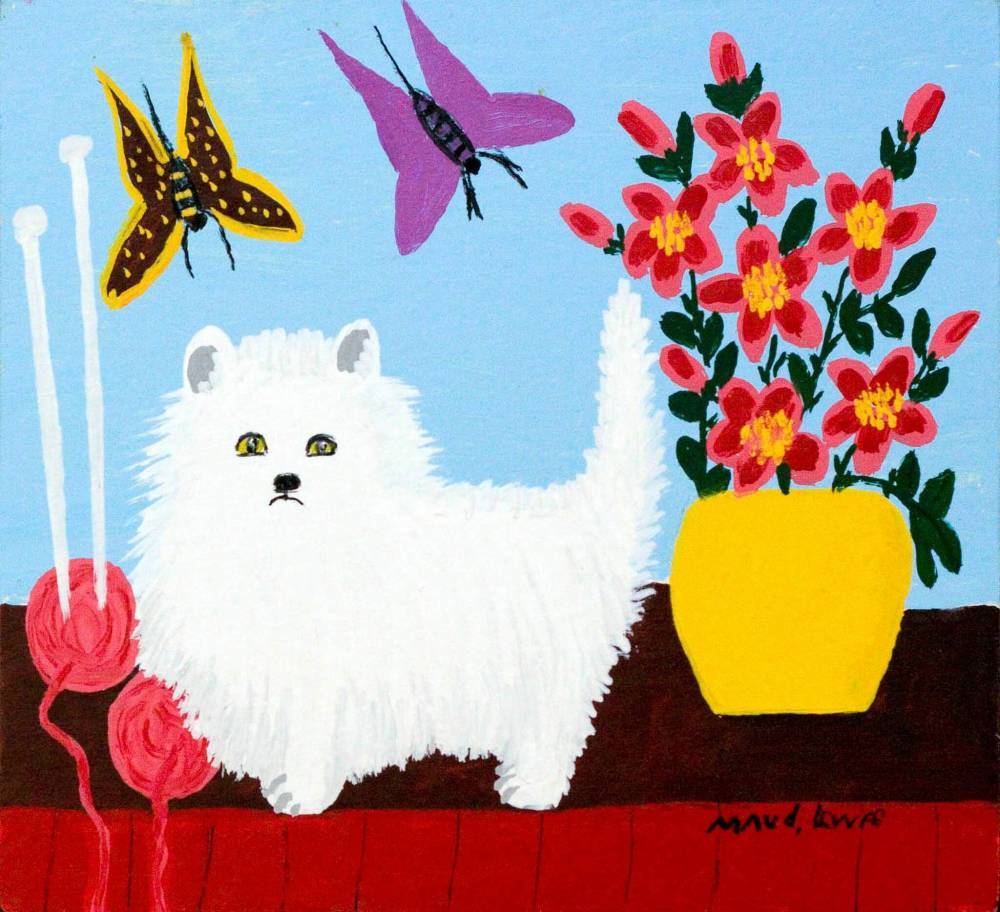
“If you look at Maud’s work, there’s such joy within her work that people saw them and bought them for themselves. They bought them for wedding gifts, souvenirs they’d bring back from Nova Scotia, and that’s how so many of them got spread all over the place,” Bill Mayberry says.
“Maud’s work has always been fun to buy, because you usually buy it from very positive people, and you usually sell them to the same type of mindset, who buy them for the joy of owning them.”
Lewis often painted the same scenes over and over again — wintry landscapes with locomotives, horse-drawn sleighs entering covered bridges or fluffy-looking cats, all looking slightly different — because that’s what tourists liked and bought.
Bill Mayberry says the value of her paintings slowly increased over the years as collectors who couldn’t afford higher-profile Canadian artists such as Emily Carr and Tom Thomson switched to lower-priced Lewis works.
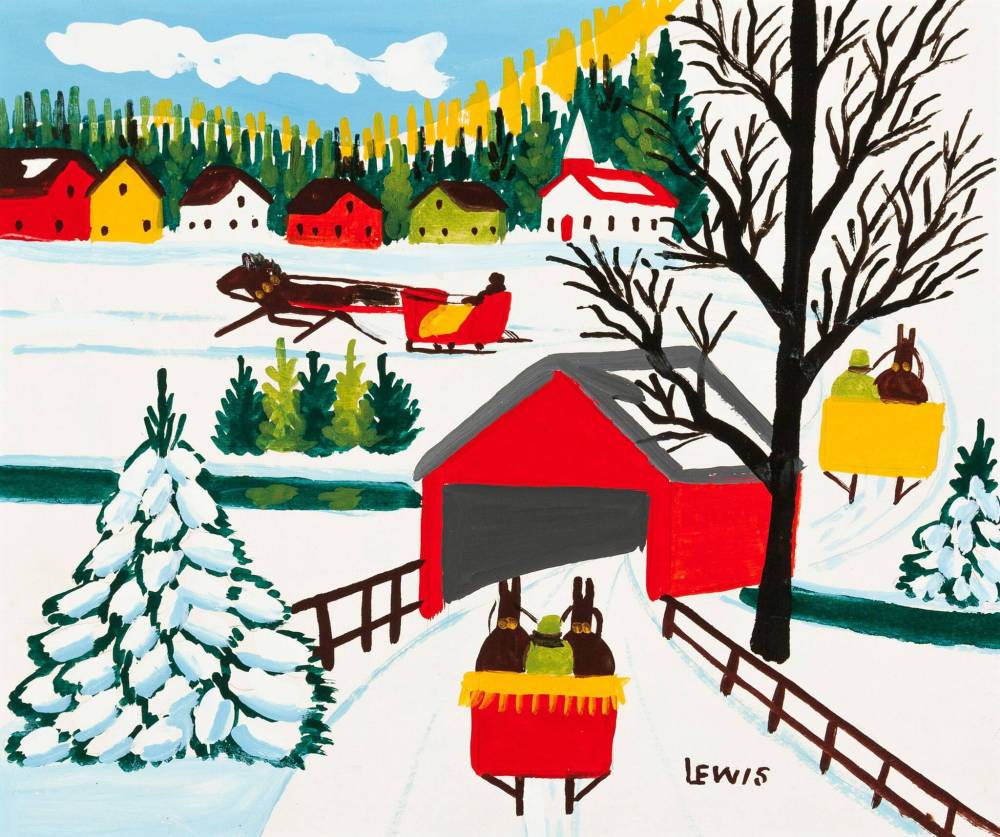
A 2016 movie, Maudie, which starred Sally Hawkins as Maud and Ethan Hawke as Everett, added to the Lewis legend and interest in her paintings increased even more.
That interest reached epic proportions last month when a London, Ont., couple auctioned a Lewis work, Black Truck, an oil painting on Masonite board estimated to be worth $30,000 to $35,000. It sold for $350,000.
The people who sold the painting say they obtained Black Truck nearly 50 years ago in exchange for grilled cheese sandwiches from a British painter, John Kinnear, who purchased it directly from Lewis.

So why aren’t more people cashing in on the Maud Lewis craze? Mayberry says it’s rare for one to be available because their owners have had their Lewis paintings for years.
The 25 paintings, postcards and letters that are part of the exhibition are on loan from Winnipeg owners — Mayberry bought and sold every one of them years ago — and despite the results from the Ontario auction, they have no interest in selling, he says.
“That’s what will probably keep the value of Maud’s (paintings) up because people find it very difficult to part with them,” he says. “Sometimes things are worth more than money, and art is certainly one of them.”
alan.small@winnipegfreepress.com
Twitter: @AlanDSmall

Alan Small
Reporter
Alan Small has been a journalist at the Free Press for more than 22 years in a variety of roles, the latest being a reporter in the Arts and Life section.
Our newsroom depends on a growing audience of readers to power our journalism. If you are not a paid reader, please consider becoming a subscriber.
Our newsroom depends on its audience of readers to power our journalism. Thank you for your support.







